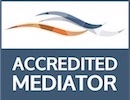The Same Day Mediation Process
Here’s an outline of how the day is organised.
Mediation One - The Initial Meeting
We start with individual meetings online or in person.
These are private, confidential conversations around seventy five minutes each.
We’ll look together at what matters most to you and what you might need from others.
You can share your experience and hopes in a calm supportive setting
If we’re online I’ll send a Zoom link and some simple guidelines to help the conversation flow.
Mediation Two - The Joint Meeting
If everyone agrees to proceed we’ll come together- if possible in the afternoon on the same day as the initial meetings.
This is your chance to speak directly and listen back to each other.
I’ll help ensure that everyone’s views intentions and needs are clearly heard.
Together, we’ll create a joint agenda based on what matters most.
Reaching a Mediation Agreement
When we have a shared agenda we can draft a joint action plan for improving relations.
The plan is assembled in good faith and is non-binding.
I’ll prepare a draft that everyone can review for final approval.
The option to “sleep on it” is always there and in some cases it is recommended.
Timing
The joint meeting usually takes at least two hours. If more time is needed we can arrange a follow up session.
Support and Follow Up
I’ll check in confidentially by email after an agreed period – just to see how things are going and whether any further support is needed.

Peter Leanse – Now You’re Talking Mediation Service – Accredited Mediator
Data Protection Policy
Regulated by UK Mediation
Member of International Mediation Institute © 2025 All Rights Reserved